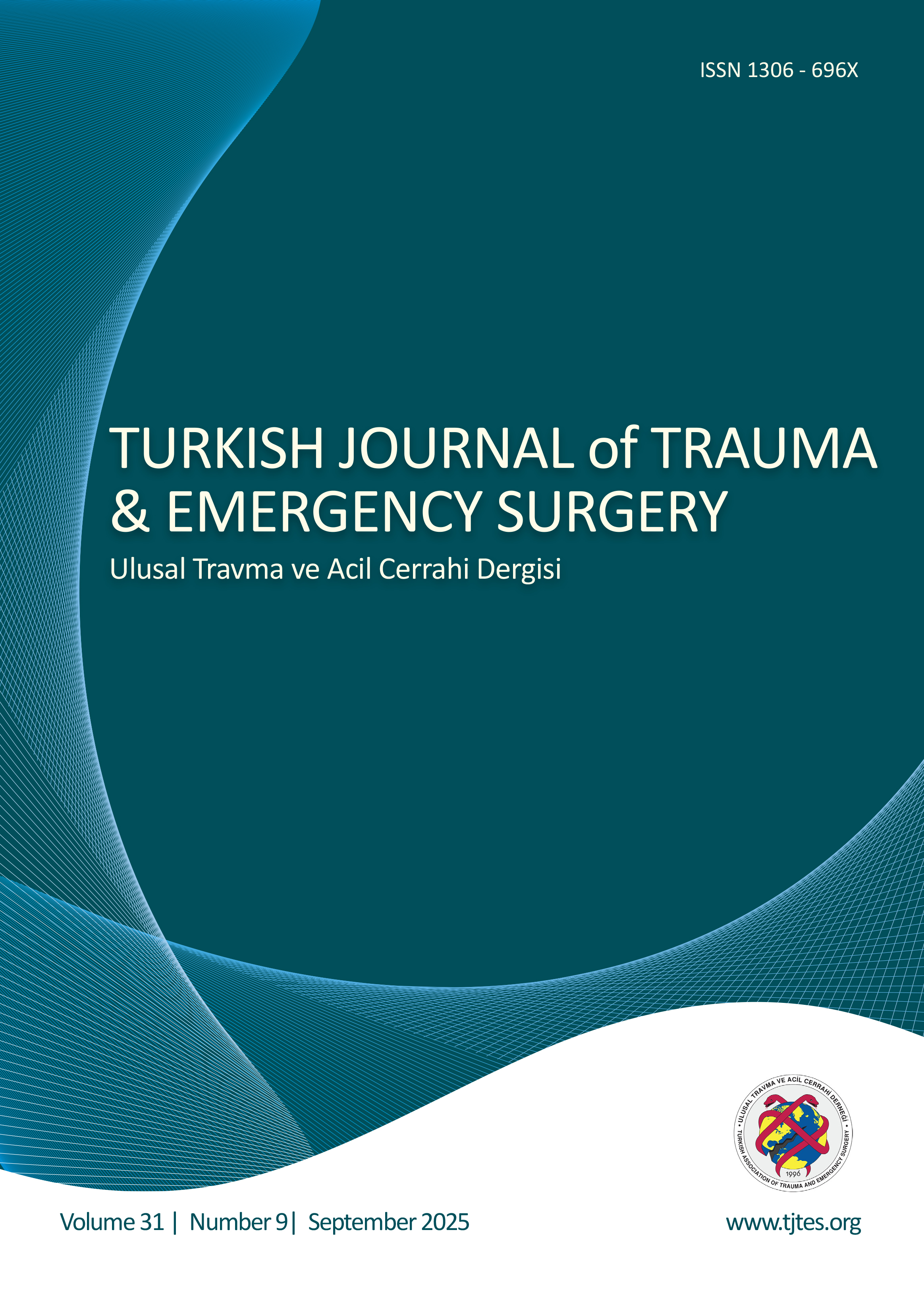Hızlı Arama
STUMBL skorunun künt toraks travmalı hastalarda hastane içi komplikasyonları öngörmedeki geçerliliği
Erdal Yılmaz1, Rohat Ak1, Avni Uygar Seyhan1, Recep Demirhan21Sağlık Bilimleri Üniversitesi, Kartal Dr. Lütfi Kırdar Şehir Hastanesi, Acil Tıp Anabilim Dalı, İstanbul, Türkiye2Sağlık Bilimleri Üniversitesi, Kartal Dr. Lütfi Kırdar Şehir Hastanesi, Göğüs Cerrahisi Anabilim Dalı, İstanbul, Türkiye
AMAÇ: Bu çalışmanın amacı, künt toraks travması nedeniyle üçüncü basamak bir hastanenin acil servisine başvuran hastalarda hastane içi komplikasyonları öngörmede Study of the Management of Blunt Chest Wall Trauma (STUMBL) skorunun prognostik bir araç olarak geçerliliğini değerlendirmektir.
GEREÇ VE YÖNTEM: Bu retrospektif kohort çalışma Ocak 2022 ile Ocak 2024 tarihleri arasında yürütüldü. Künt toraks travması tanısı alan 18 yaş ve üzeri erişkin hastalar çalışmaya dahil edildi. Veriler, hastane bilgi yönetim sisteminden elde edildi. Komplikasyonlar arasında pulmoner enfeksiyonlar, plevral efüzyon, pnömotoraks, yoğun bakım ünitesi (YBÜ) yatışı ve uzamış hastane yatışı yer aldı. Ayırt edici performans, alıcı işletim karakteristiği (ROC) analizi ile değerlendirildi; ROC eğrisi altında kalan alan (AUROC) ve hassasiyetgeri çağırma eğrisi altında kalan alan (AUPRC) hesaplandı.
BULGULAR: Toplam 536 hasta çalışmaya dahil edildi. Bunların 150sinde (%28,0) hastane içi komplikasyon gelişti. Komplikasyon gelişen hastaların STUMBL skorları anlamlı şekilde daha yüksekti (medyan 13e karşı 6, p<0,001). STUMBL skoru, AUROC 0,934 (güven aralığı [GA] %95, 0,9090,959) ve AUPRC 0,889 (GA %95, 0,8470,924) değerleri ile güçlü ayırt edici performans gösterdi. En uygun eşik değeri ≥20,5 olarak belirlendi ve bu noktada duyarlılık %85, özgüllük %89 olarak saptandı.
SONUÇ: STUMBL skoru, künt toraks travmalı hastalarda hastane içi komplikasyonları öngörmede mükemmel performans göstermiştir. Basit yapısı ve yüksek öngörü değeri sayesinde, acil servislerde klinik karar verme süreçlerine etkili biçimde entegre edilebilir.
Validation of the STUMBL score for predicting in-Hospital complications in patients with blunt chest trauma
Erdal Yılmaz1, Rohat Ak1, Avni Uygar Seyhan1, Recep Demirhan21Department of Emergency Medicine, University of Health Sciences, Kartal Dr. Lütfi Kırdar City Hospital, İstanbul, Türkiye2Department of Thoracic Surgery, University of Health Sciences, Kartal Dr. Lütfi Kırdar City Hospital, İstanbul, Türkiye
BACKGROUND: This study aimed to validate the Study of the Management of Blunt Chest Wall Trauma (STUMBL) score as a prognostic tool for predicting in-hospital complications in patients with blunt chest trauma admitted to a tertiary care hospital emergency department.
METHODS: A retrospective cohort study was conducted between January 2022 and January 2024. Adult patients (≥18 years) diagnosed with blunt thoracic trauma were included. Data were collected from electronic health records. Complications included pulmonary infections, pleural effusion, pneumothorax, intensive care unit (ICU) admission, and prolonged hospital stay. Discrimination performance was assessed using receiver operating characteristic (ROC) analysis, and the area under the ROC curve (AUROC) and area under the precisionrecall curve (AUPRC) were calculated.
RESULTS: A total of 536 patients were included. Among them, 150 (28.0%) developed in-hospital complications. Patients with complications had significantly higher STUMBL scores (median 13 vs. 6, p<0.001). The STUMBL score showed strong discriminative ability with an AUROC of 0.934 (95% confidence interval [CI], 0.9090.959) and an AUPRC of 0.889 (95% CI, 0.8470.924). The optimal cutoff value identified was ≥20.5, resulting in a sensitivity of 85% and specificity of 89%.
CONCLUSION: The STUMBL score demonstrated excellent performance in predicting in-hospital complications in blunt chest trauma patients. Its simplicity and strong predictive value suggest it can be effectively incorporated into emergency department clinical decision-making.
Makale Dili: İngilizce




